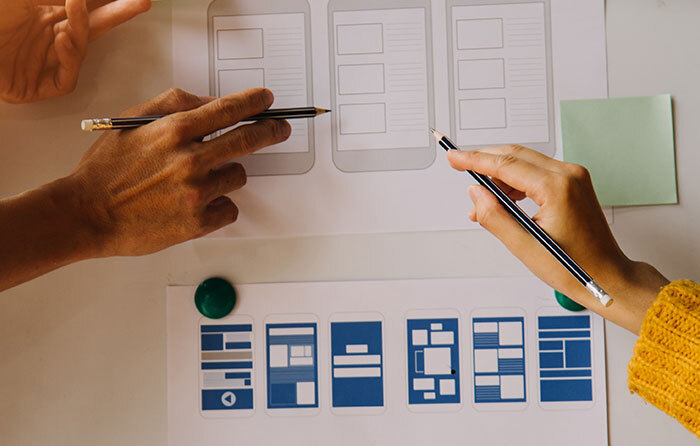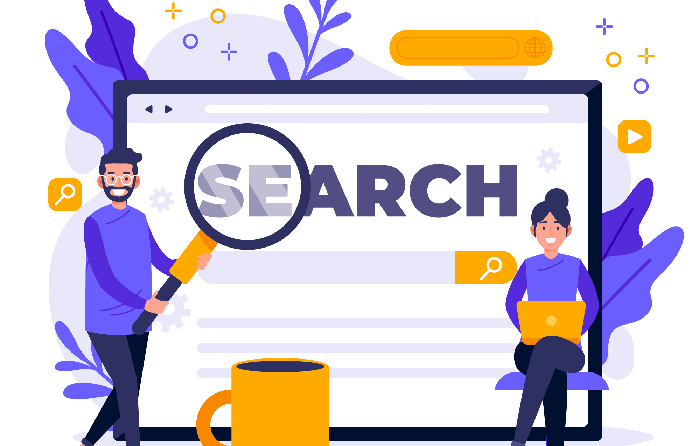8 Stages of Website Design

- The creation and design of a website are the two important steps in the process. But it can also require database management, web publishing, and website programming.
- In contrast to web design, which describes a website’s appearance, web development refers to a website’s operation. In terms of creating a website, both abilities are equally important. Even if a website is beautifully designed and well picked for the business, it won’t be successful if it doesn’t work perfectly. And the other way around.
Types of Website Development
There are several different types of website development, but front-end development and back-end development are the most typical kinds. This refers to what a user sees and what a user doesn’t see on the page.
Front End Development
- What the user sees and interacts with on the website is the result of front-end development. The colors, layout, fonts, and images on a website are all examples of website design. If you work as a front-end developer, you are in charge of determining how a website should seem and function.
- In front-end development, the website design is created using programmes like Photoshop and Illustrator. Additionally, a front-end developer will require knowledge of countless coding languages, such as HTML, CSS, and JavaScript. It is important to understand these programming languages so that a user may actually interact with the website through buttons and menus.
Back End Development
- What the user of the website does not see is the back-end development. The back-end development process is more concerned with functionality than looks. This can apply to everything that happens behind the scenes of a website, such as user authentication, network and hosting configuration, database interaction, and more.
- A back-end developer is in charge of ensuring that everything on the website functions properly. For instance, a back-end developer is in charge of gathering and analyzing data when users contribute their information to a website. Ruby,.Net, and Python are examples of server-side languages that a back-end developer should be knowledgeable about.
Full Stack Development
- Full-stack development is another sort of website development. Both front-end & back-end can be used by full-stack engineers. A full-stack developer must be proficient in server-side and programming languages and have the ability to manage every side of website development.
What steps are involved in the development of a website?
- Information Gathering
- Planning
- Design
- Content
- Functionality
- Testing
- Launch
- Monitoring & Updates
1. Information Gathering
Information gathering is necessary before creating a website. Intention, primary objectives, and target market will all be included here.
In basic terms, the reason behind making this website was to serve the goal. Is it to promote oneself or to spread knowledge about a certain subject? Wish to use this website to achieve aims. Have a better understanding of how to build the website and what information to add if have goals. Website will be attractive to the target demographic. Prior to creating the website, be sure to identify the target market since every firm has one. Consider the age, gender, and location of prospective clients.
2. Planning
After gathering the essential data for the website, start planning it. Make a sitemap using the data from the initial step. All the website’s topics and subtopics are included in a sitemap. Visualize the website and how a user can navigate from one page to another with the help of the sitemap. This stage is important to design a user-friendly, appealing website.
3. Design
The design of the website must be decided upon after its general layout has been created. All visual content, such as pictures and videos, will fall under here. When designing the layout of the website, keep the target audience in mind.
A brand with pet owners as its target market, for instance, will have a completely different website than one for public relations. So a website should be created with the target audience’s needs and requirements in mind.
4. Content
One of a website’s most crucial components is the material that it contains. The audience will understand the message through the content, which will also persuade them to visit the website. It is crucial because it will help to identify the objectives and purpose before you begin writing content. Material needs to be timely and compelling enough for users to return often.
5. Functionality
Start building the website at this stage. The previously mentioned steps will also come together at this point to produce the website’s appearance and performance. Websites should be simple to use and navigate. Typically, the homepage is designed first, followed by the creation of each subpage. Additionally, ensure that the website is usable on both desktops and mobile devices.
6. Testing
The website isn’t completely ready to be launched when it has been successfully developed. It should first be tested. Although testing the website can be time-consuming, it is vital to ensure that it is functioning perfectly. In this phase, test every link and button on the website, ensure that everything is spelt correctly, and ensure that the website displays identically on a phone and a computer.
7. Launch
The thrilling step is finally launching the website after thoroughly examining it and testing it a few times. Upload a website to a server before it can be published. It should perform one final test right away after uploading it to make sure everything is running properly. The general public can now access the website.
8. Monitoring & Updates
It’s the key to periodically monitor the website even after successfully launching it. Errors can occur, so it’s important to monitor the website to ensure that it stays up and running. Any matter can be resolved as soon as possible, and the website should always be current.


